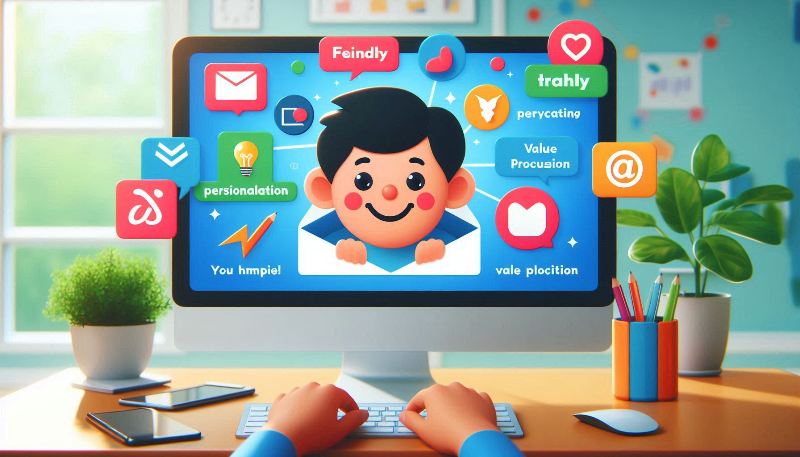Cold emails remain a powerful tool for connecting with potential clients, generating leads, and growing your business. However, crafting the perfect cold email requires more than just basic communication skills. To be successful, you need to understand your audience, create engaging content, and follow specific guidelines. In this article, we’ll discuss effective strategies for creating high-performing cold emails and provide cold email examples that can enhance your outreach efforts.
What is a Cold Email?
A cold email is an unsolicited message sent to a recipient who has no prior relationship with the sender. It is typically used for business development, networking, or sales outreach. The objective of a cold email is to initiate contact and establish a professional relationship, whether for lead generation, business collaboration, or job opportunities.
Why Use Cold Emails?
Cold emails serve as an excellent way to introduce yourself, your product, or your service to potential clients or business partners. When done right, cold emails can help you:
- Generate high-quality leads.
- Expand your professional network.
- Drive more sales for your business.
- Establish relationships with influencers or decision-makers.
Best Practices for Writing Effective Cold Emails
When crafting cold emails, it’s essential to follow certain guidelines to maximize your chances of getting a response. Here are some best practices for writing impactful cold emails:
1. Personalize the Email
Generic messages can be easily spotted and are often ignored. Personalize your cold email by addressing the recipient by name, mentioning their company, and referring to specific pain points they might be experiencing.
2. Create a Compelling Subject Line
The subject line is the first thing your recipient sees, and it determines whether your email will be opened or deleted. Make it clear, concise, and enticing. For example: “Boost Your Sales by 30% with Our New Software Solution.”
3. Provide Value
Your cold email should focus on what you can offer the recipient. Instead of making the email about you, frame it around the recipient’s needs and how your product or service can solve their problems.
4. Keep it Short and to the Point
Busy professionals do not have time to read lengthy emails. Aim to keep your message concise and easy to read. A good rule of thumb is to stick to 100-150 words for the body of the email.
5. Include a Clear Call-to-Action (CTA)
What do you want your recipient to do after reading your email? Include a clear CTA, such as scheduling a call, signing up for a demo, or replying for more information.
Cold Email Examples
Below are some cold email examples to help you get started:
Example 1: Reaching Out to a Potential Client
Subject Line: “Helping [Recipient’s Company Name] Achieve Better Customer Engagement”
Hello [Recipient’s Name],
I hope this email finds you well. I’m [Your Name] from [Your Company Name]. I noticed that [Recipient’s Company Name] has been focusing on improving customer engagement. Our software solution has helped companies like [Client’s Company] increase engagement by 40%. Would you be interested in a quick call to explore how we can achieve similar results for your business?
Best regards,
[Your Name]
[Your Contact Information]
Example 2: Networking with an Industry Professional
Subject Line: “Admired Your Recent Post on [Topic] – Let’s Connect!”
Hi [Recipient’s Name],
I recently came across your article on [Topic] and was impressed by your insights. I’m currently working on a project related to [Relevant Topic], and I believe our shared interest could make for an engaging discussion. Are you open to a brief call sometime next week?
Looking forward to your response!
Kind regards,
[Your Name]
[Your LinkedIn Profile]
How to Avoid Common Cold Email Mistakes
Avoid these common mistakes to increase your chances of a successful cold email campaign:
- Lack of Personalization: Avoid sending out generic messages. Instead, customize your emails to each recipient.
- Overly Long Content: Emails that are too long can overwhelm the reader. Stick to the main points and avoid fluff.
- No Clear CTA: Make sure your email has a specific call-to-action. Whether it’s scheduling a meeting or signing up for a newsletter, the next steps should be obvious.
Snippet Question Answer: How to Write an Effective Cold Email?
Answer: To write an effective cold email, personalize the message, use a compelling subject line, provide value to the recipient, keep the message concise, and include a clear call-to-action that encourages engagement.
Conclusion
Cold emails, when done right, can be a powerful tool for business growth and networking. By following best practices such as personalization, crafting compelling subject lines, and providing value, you can increase your chances of getting a response. Use the cold email examples provided to inspire your next outreach campaign and start making meaningful connections today!



